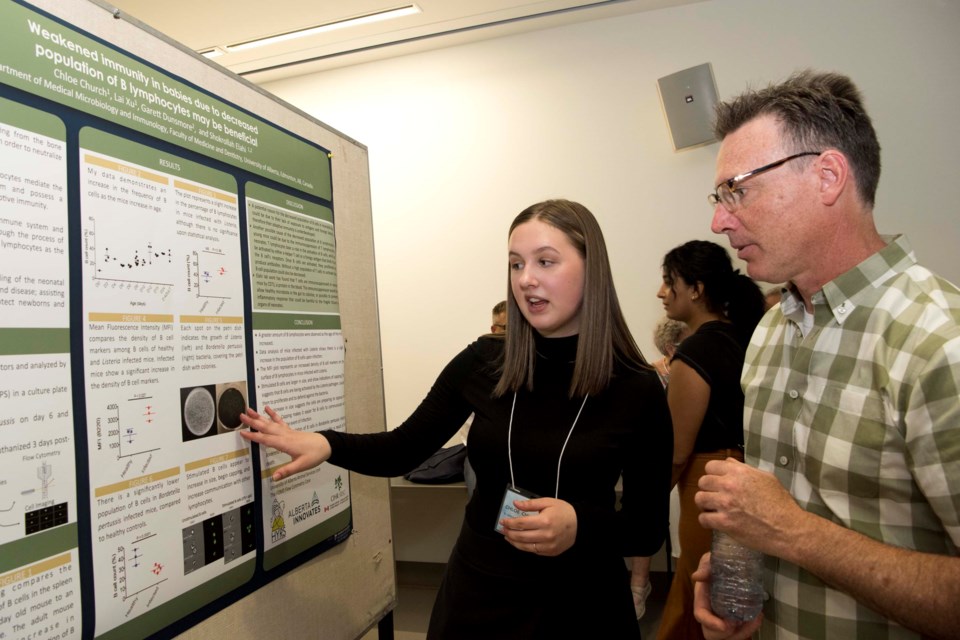Two St. Albert students broke new ground in cellular research this summer as part of a research program at the University of Alberta.
Chloe Church of St. Albert Catholic High and Evan Maloney of Paul Kane were two of the 29 students at the University of Alberta Thursday speaking on the cutting-edge research they did this summer as part of the Heritage Youth Researcher Summer (HYRS) program.
This program gives Grade 11 students a six-week paid summer internship in a health research lab to get them interested in medical research, said HYRS director Gary Eitzen.
“The university is a big and intimidating place,” Eitzen said, and some participants are literally shaking with fear on their first day. By the end of it, they’re brimming with confidence and can present their research findings with the skill of veteran grad students.
Cool research
This year saw HYRS students manipulate fly genomes, use augmented reality to study breast cancer, and analyze the genes of a real human patient to find the cause of a rare disease.
Church said she got to study the development of the immune system in mice.
Babies are stuck between a rock and a hard place when it comes to immunity, she explained. If their immune system is too weak, they get sick and die. If it’s too strong, they overreact to a threat and get organ-damaging fevers. If doctors can better understand how the immune system develops, they could create improved treatments for babies.
Church said she took baby mice, exposed them to whooping cough or food poisoning, and then analyzed immune cells from their spleens as they aged using a flow cytometer – a device she found fascinating.
“It sucks (cells) up one cell at a time,” she said of the cytometer, then shoots them with a laser to determine their identity.
Church said she found just 31 per cent of the immune cells in young mice were B-cells, which are the ones that trigger immune responses such as fevers – adults had about 55 per cent B-cells. Having fewer B-cells could be an advantage to young mice, she noted, as it would make their untrained immune systems less likely to go off for the wrong thing.
Church said she was surprised to see B-cell count go down instead of up in mice exposed to whooping cough. This could be because whooping cough produces toxins when destroyed, which could have taken out immune cells.
Maloney studied two cell proteins called Rac1 and hnRNPA1 that researchers suspected, but had yet to prove, interacted during RNA synthesis. To find out, he tagged the proteins with fluorescent markers and took pictures of them to show that they did, in fact, clump together and interact. Now, other researchers can study this interaction to find out what it actually does.
Church, who plans to go to medical school, said HYRS had bolstered her self-confidence and love of science, and taught her valuable lab and teamwork skills, adding that it had been a privilege to work with such passionate scientists. She encouraged anyone with an interest in medical science to apply to the program.
“You get to explore your love of science while also having fun.”
See bit.ly/2MlqxIR for more on HYRS.




